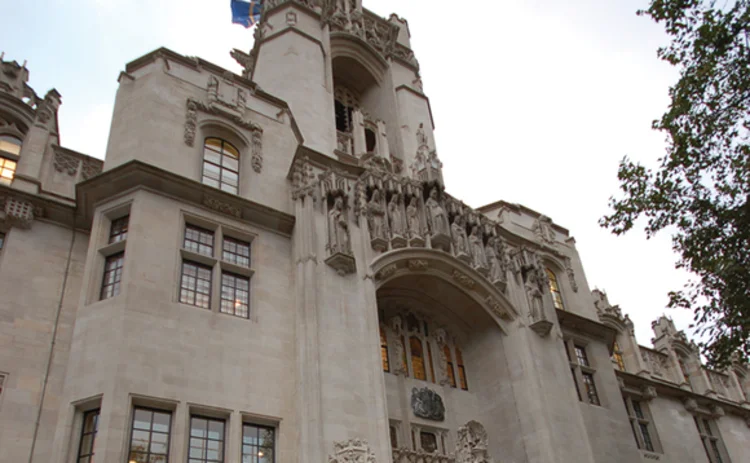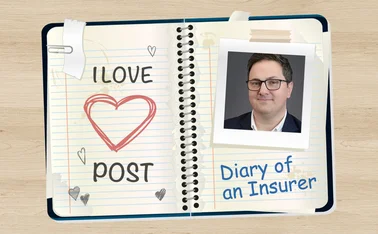
Insurers and FCA clash on trends clauses in Supreme Court BI test case

Insurer defendants and the Financial Conduct Authority set out their starkly differing views on the use of trends clauses on day two of the ongoing business interruption test case hearing at the Supreme Court.
David Turner QC, representing RSA, opened the day by wrapping up his submission regarding its Cottagesure policy – RSA1 – which he had started the previous day before turning to RSA3 – also known as Eaton Gate Commercial Combined.
The provider had opted against appealing the High Court’s ruling on two other policies including the Marsh/Jelf Resilience wording.
Turner maintained a focus on radius, which had been prominent across the first day’s proceedings when QBE, Argenta and MS Amlin had highlighted the issue.
Noting that the FCA had employed what “Aristophanes might describe as hair splitting wordsmithery” in the original hearings in September, he argued that there should be no rewriting of the scope of the peril.
“The starting point is to read the coverage clauses and the exclusion clauses together to ascertain coverage,” he said.
Challenged by Lord Leggatt, Turner denied it would be an unreasonable and “absurd approach to construction” for policyholders to be reading the general exclusions 50 pages further on when contemplating infectious diseases and the BI cover section.
The exclusions were signposted throughout the policy and twice in the BI section, he stated.
“It is where it is doesn’t justify putting a red line through it,” he said, adding that there should not be an approach of dismissing them as small print.
The list of notifiable diseases, such as rabies, have no or very remote chance in the case of legionnaires, of causing a pandemic, he continued.
Radius
The infectious diseases extension only allowed for occurrence at the premises or within 25 miles, he argued.
An exclusion cutting down cover is unremarkable, “that is the purpose of an exclusion clause” he maintained.
He also tackled proximate cause and RSA3.
Turner concluded that for the policy to trigger the insured had to “establish that it would not have suffered the relevant interruption ‘but for’ the occurrence of notifiable disease within the relevant radius”.
On behalf of Hiscox, Jonathan Gaisman QC said the FCA had mislabelled its disease clauses when they were in fact a public authority clause.
This responds to certain circumstances such as vermin or food poisoning, he pointed out.
“The detection of mouse droppings in a leisure centre is not an external emergency in the world,” Gaisman observed.
On the structure and nature of the PA clause he added that the “court below constructed the wrong counterfactual when it comes to Hiscox”.
The public authority part of the PA clause could not be relegated to adjectival status, he insisted, as it would eviscerate the clause.
“The FCA’s contention is the insured recovers under PA losses that would have occurred without the PA restrictions, how can that be right?” he asked.
The FCA, he set out, had conflated the disease with the government reaction.
Localised
Listing eight grounds of appeal he focused on five mentioning and highlighted that there were four policies under consideration. Each had the PA clause, which the judges ruled attached coverage. However he pointed out that the non-damage denial of access clause in three policies did not respond with a one mile radius. That radius, he highlighted, also existed in the PA clause.
Such a radius meant localised diseases such as tetanus or German Measles in a school, he listed, dismissing the FCA’s suggestion that “insurers give illusory cover”.
It was wrong to say Hiscox4 contemplated a serious national emergency as it was designed for a local authority or the police reacting to a small scale local event.
He repeated the fact there was a difference between a 25-mile radius and a one-mile limit and that Hiscox had chosen the latter was a pointer to a local occurrence.
“If parties meant for national pandemic why have radius?” he asked.
It should not be viewed as a “postcode lottery” where policyholders would be paid if a sufferer came into their circle, he argued.
Restrictions
He further focused on loss that he argued would have occurred anyway.
Using an example of a restaurant that was closed from 23 March to early July, he said the obvious metric to use was performance before it was made to close and after it reopened.
If it was achieving 30% of normal in March and 25% in July how could it claim for 100% in between the two, he queried, while also taking aim at the FCA’s written contention that loss adjusters would have to provide 2000 page reports.
For Arch, John Lockey QC said the appeal was focused on causation and the prevention of access with the closed list of notifiable diseases able to be ignored as they did not include Covid-19.
The provider, he pointed out, had already admitted liability for a number of non-damage BI interruption claims under the government and local authority action extension in question.
He argued, however, that not every prevention of access will trigger this extension and zoned in on the trends clause and “results that would have been achieved in the same period had the damage not occurred”.
Lockey stated: “The key issue is whether in adjusting claims where there has been a relevant prevention of access Arch can seek to remove loss.”
Adjusting
While he accepted some of the court’s findings, on the issue of where a reduction in turnover was not caused by prevention of access being recoverable “we respectfully submit something has gone wrong with the court’s analysis”, he said.
Expressing sympathy for SMEs he argued that an expansion of the policy was not an “appropriate solution” and the question of what cover has been granted was dictated by the terms.
Recoveries should be for the economic effect to the business “not in the round”, he detailed.
Extraordinary
Colin Edelman, QC, responded for the FCA, which had brought the case on behalf of policyholders.
He cited maps showing “one indivisible national epidemic … as the court found” in his response on the topic of the use of radius.
He accused insurers with disease clauses of relying on ‘but for’ scenarios which found a route to none of their policies responding or only giving limited payment because a case in a local area made no difference and the government would still have acted.
“The more serious the underlying cause of the government intervention … the less cover there is or even no cover at all,” he observed.
Adding: “This court may find it is driven to these extraordinary conclusions by - we would say - the inappropriate and slavish application of a but for test, but they would be, we submit, extraordinary conclusions to draw.”
“What insurers are complaining about is ‘we insured perils but not ones that were going to cost us a huge amount of money, we never contemplated that’. Well that isn’t an answer,” he argued.
He addressed the Orient Express ruling, which some of the judges on the panel were involved with, saying that actually there had been two concurrent causes of the claim.
Continuing: “We don’t shrink from saying that Orient Express has construed and applied trends clauses without regard to their true commercial purpose and that also infected the reasoning on causation.
“When one has concurrent causes that are associated with the same peril the trend clause isn’t dealing with that at all and is not what it is there for. You cannot use the trends clause as was used in the case as a rationalisation or justification for applying ‘but for’ to proximate cause.”
He also noted that businesses were not able to claim on the basis of a ‘but for’ where they were somehow the only unaffected firm and all the competition had been removed as otherwise you would get “windfall profits”.
Status
He said that insurers had mischaracterised his arguments that insureds are covered for all consequences.
“That has never been part of our case,” he maintained along with noting they had been trying to defeat his concurrent argument by elevating the ‘but for’ test to something that has “exclusionary status”.
“But for causation isn’t a basic hurdle that an insured has to cross,” he insisted. “We have never shied away from a ‘but for’ element but it is always a question of ‘but for’ what?”
Edelman took on the topic of trends clauses. These, he said, were mathematical calculations designed to find a real normal world situation.
Looking at the calculations as a means to revisit and reintroduce causation was “fundamentally wrong” he told the judges concluding that his interpretation was not a “forced approach to trends clauses”.
The Supreme Court appeal is due to run until Thursday afternoon and Edelman will have all of Wednesday to continue his response on behalf of the FCA.
It is being heard by Lords Reed, Hodge, Briggs, Hamblen and Leggatt.
Only users who have a paid subscription or are part of a corporate subscription are able to print or copy content.
To access these options, along with all other subscription benefits, please contact info@postonline.co.uk or view our subscription options here: https://subscriptions.postonline.co.uk/subscribe
You are currently unable to print this content. Please contact info@postonline.co.uk to find out more.
You are currently unable to copy this content. Please contact info@postonline.co.uk to find out more.
Copyright Infopro Digital Limited. All rights reserved.
As outlined in our terms and conditions, https://www.infopro-digital.com/terms-and-conditions/subscriptions/ (point 2.4), printing is limited to a single copy.
If you would like to purchase additional rights please email info@postonline.co.uk
Copyright Infopro Digital Limited. All rights reserved.
You may share this content using our article tools. As outlined in our terms and conditions, https://www.infopro-digital.com/terms-and-conditions/subscriptions/ (clause 2.4), an Authorised User may only make one copy of the materials for their own personal use. You must also comply with the restrictions in clause 2.5.
If you would like to purchase additional rights please email info@postonline.co.uk








